-
Featured News
Marianne Faithfull 1946-2025
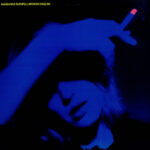 By Harvey Kubernik
Singer, songwriter, actress and author Marianne Faithfull passed away on January 30, 2025.
In 2000 I discussed Faithfull with her first record producer Andrew Loog Oldham, the 1
By Harvey Kubernik
Singer, songwriter, actress and author Marianne Faithfull passed away on January 30, 2025.
In 2000 I discussed Faithfull with her first record producer Andrew Loog Oldham, the 1 -
Featured Articles
The Beatles: Their Hollywood and Los Angeles Connection
 By Harvey Kubernik
JUST RELEASED are two new installments of the Beatles’ recorded history, revised editions of two compilation albums often seen as the definitive introduction to their work.
Or
By Harvey Kubernik
JUST RELEASED are two new installments of the Beatles’ recorded history, revised editions of two compilation albums often seen as the definitive introduction to their work.
Or -
The Radiators From Space Story, Part 3: Troubled Pilgrims
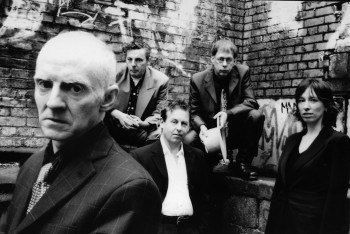
By Brian Neavyn
The arrival of the Radiators From Space on the Dublin scene as punk emerged was followed in early 1977 by their super-charged debut single “Television Screen.” Their move to London that autumn without lead singer Steve Rapid coincided with the release of their red hot album TV Tube Heart. On this evidence the band were very much a contributor to the new punk rock sound. This early period and the band’s interaction with the London punk scene is covered in detail in UT#35. Linking up with producer Tony Visconti as the year ended, opened up possibilities for songwriters Philip Chevron and Pete Holidai. They grasped the opportunity to pursue a musical path that their earlier pre-punk music influences determined. In early 1978, the Radiators (re-named) launched their radical new sound. The powerful and catchy glam-pop single “Million Dollar Hero” very nearly broke into the charts and was the appetizer for their unique Ghostown album, which was recorded in summer 1978.
However the punk scene was changing and developing so rapidly month by month that all acts associated with the early ‘76/’77 scene faced an uncertain reception. For the Radiators, much of their punk fanbase had peeled away by the time Ghostown was released over a year later. The delayed release did not help their cause and the band broke up in early 1981. Despite two project-focused but brief activities in the late 1980s the Radiators from Space were no more. UT#36 carries the story of the Ghostown album. The album’s literary references were woven with criticism of the state and in particular the church. This story also covers the release in 1989 of the single “Under Clery’s Clock” where Phil Chevron, in revealing his homosexuality, wrote of the dating experience of a young gay man.
Throughout the ‘90s their musical legacy attracted an ever growing international interest. The Radiators From Space reformed in late 2003 to play a Joe Strummer tribute concert. Guitarists Phil Chevron and Pete Holidai were joined for the show by original singer Steve Rapid and a new rhythm section of Cait O’Riordan on bass and Gareth Averill (Steve’s son) on drums.
When the Radiators from Space were being reformed in late 2003 was there consideration given to reviving the original rhythm section of Mark and Jimmy?
Phil:We didn’t so much reform in 2003 as get together for a single show, a Joe Strummer tribute, playing three or four songs. We went with an available line up which, actually, featured Gareth Averill on drums at first. Steve suggested Cait O’Riordan and I said if she’ll do it, I’m OK with that. It was just one show. Jimmy (Crashe) lives in Wales and Mark (Megaray) had long since moved on.
Steve: I had always stayed in touch with Philip and Pete since the band broke up and Pete had been involved with some of my post Radiators projects like the SM Corporation (or one of the many names we played under but the one that stuck as we released a single under that name). We had discussed possible reformations but the timing and motivation was never quite right. We had done it previously when the band played an AIDS benefit. That was Philip, Pete, Jimmy and Mark and I joined them for the encores. That gig was recorded and issued on cassette. But we regularly used to meet up when we were all in town. We met up a few days before the Joe Strummer tribute concert and I said, “It’s a pity we didn’t know about it earlier as we might have been able to do something for it.” Then we thought ‘why not?’ and we contacted the promoter to see if they would be interested. They were and we set about preparing, which consisted of us rehearsing in Cait’s flat before we did the gig. I had meet Cait through working on some sleeve designs with Elvis Costello and thought she may be interested in helping us out. The lineup was completed by my son Gareth playing drums. We enjoyed the experience, it felt good and that gave us the impetus to carry on. We decided to set a date, which was Bloomsday the following year, and began a series of rehearsals for that. Johnny Bonnie had been involved drumming with a Ramones tribute band Pinhead who also played the Joe Strummer gig and Pete asked him if he’d like to be involved. As Johnny had always been a big Radiators fan he readily agreed to join.
Pete: We offered our services to the Joe memorial at fairly short notice and at that time had no real plans to make it a permanent thing so we put together a scratch squad of players.
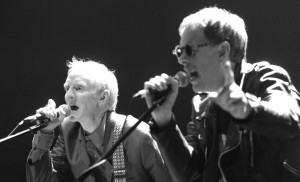
Phil Chevron and Steve Rapid. First reunion gig, 2004.
How did it feel to have original frontman Steve back in the ranks?
Phil: In one sense Steve had never been away. He just hadn’t been center mic for a few decades. But then neither had any of us.
Steve: I hadn’t really thought about singing although when we did the Strummer thing I was doing vocals with Philip and Pete and it felt natural somehow. On the first gig I only stayed on stage for the songs that I was singing. Later on when the band were doing “Faithful Departed” I could hear some ghostly electronic noise in the mix so I started to use my analog synth for that. Doing that helped to bring something more for me in the overall scheme of things. I built it from there.
Pete: It felt good to have Steve on stage with us again as he always provided a unique visual and musical element.
What motivation created the desire to reform, was it purely to participate in the Joe Strummer memorial or was it a true rebirth of the Radiators or both?
Phil:The former. But you do harbour secret hopes that it’ll turn out to be more than that. See, you can’t push this shit, it either holds promise or it doesn’t. In a sane world you resist reformation, but a part of your soul still wants to come out to play and that can be harder to resist. We had unfinished business probably.
Pete: The one-off performance generated the desire to explore it further and see what happens.
At the time the addition of Cait Riordan appeared as a PR master stroke, did it just not work out?
Phil: No PR stroke was intended, it’s just how it worked out. Obviously, me and Cait had history, but enough time seemed to have elapsed. Pete and Steve and then Johnny were perfectly entitled to feel they deserved to figure it out for themselves, without my baggage. I went with that and so, I think, did Cait. It was the right thing to do. Her playing energized us and kicked us where we needed it. Any reasons it didn’t work out for the long term are entirely in the domain of the private and personal. Cait had stuff she needed to sort out. It happens.
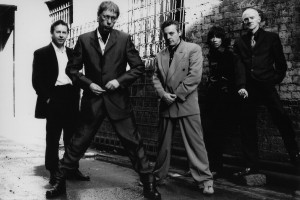
The Radiators, 2004. L to R: John Bonnie, Steve Rapid, Pete Holidai, Cait O’Riordan, Phil Chevron.
Steve: Cait joined and left on her own free will and her time with the band was I hope as positive for her as it was for us at the time. She joined the ranks of our exploding bass players.
Pete: Cait’s enthusiasm helped energize us at that stage, I personally hoped it would be for the long term because we (along with Johnny) had developed a good working relationship often rehearsing as a three piece to knock a lot of the live set into shape allowing Steve and Philip to come in at a later stage. When she bailed out with little or no warning I was very disappointed and a little annoyed.
The great Johnny Bonnie, one of the most respected drummers in Dublin joined up. Did his style change the band’s musical and personal dynamics?
Pete: I met Johnny at a party held by mutual friends, my wife had known him from before and she introduced us, He has turned out to be perfect for us in so many ways. I think his style is very direct and uncomplicated yet clearly thoughtful and creative.
Steve: I had met Johnny at several gigs and knew he was a fan of the band as well as being a great drummer and a good person to have around so it was a no-brainer when he joined and he’s been in the drum seat longer than anyone now.
Phil: Isn’t he the best? I had no idea who he was, still don’t after 10 years. His aunt was the great Monica Bonnie, who had a star act as a dancing percussionist in Dublin variety theatre, and Joe Bonnie was comic genius Jimmy O’Dea’s personal drummer. I thought the Bonnies were all great. It clinched the deal for me. Johnny knows the difference between 120 bpm and 118 bpm. I think that’s remarkable.
The band reformed as The Radiators (Plan 9), I assume after Ed Woods’ movie?
Steve: It was a way of showing that it was something new and it was just that the film title was Plan 9 from Outer Space. So it was a continuation of the suffix. But we still got referred to as the Radiators from Space which is really our true incarnation, so we went back to that.
Pete: It was a bit of fun and an attempt at self parody, but it does now signify a particular phase in our timeline with the two EP releases utilizing that moniker.
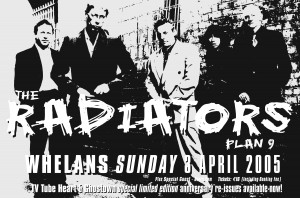
With the recording sessions in 2005 was there a goal of an album in sight? If not at what stage did the band realize that the material being presented was arguably your best batch of songs?
Pete: The initial recording sessions at Grouse Lodge were in many ways a little uncertain in terms of where we were and where we were going musically, there was no thought in my head, at that time, of doing an album, we had to find out if this line-up worked as musicians and people and as with most bands we had our own tensions and difficulties that had to be sorted out to get the modus operandi correct to proceed and take things on. In that context those sessions proved invaluable in the long term.
Phil: There truly was never an album in sight until we had written a couple of new songs. I felt an album would be liberating because we were still, to some extent, sailing beneath the albatross Ghostown. I mean, we’d never been able to follow up our great masterpiece and nor had we been allowed to, and that digs deep. It took me a long time to figure out that nobody else had managed to follow Ghostown either. I don’t know if anyone wanted to or not, it’s not really the point. The thing is they hadn’t. Or they couldn’t. Whatever. At some point the albatross just shot itself. Go write some songs. Go see. So although an album was a lovely idea, I’m not sure how seriously any of us took it until we were actually doing it. It almost went for a walk when Cait left halfway through, but, basically, having gotten that far, why stop now? All that said, you don’t know you’ve written a great batch of songs until you’ve done so and, this being the Radiators, most of these were put together as they were being recorded, so… But I don’t think we’d have proceeded if we hadn’t felt we could deliver. “Hinterland,” which we recorded for the EP to coincide with our U2 show in Croke Park, was an enormous boost. If not yet a great recording, it was certainly a good song. That sort of green-lit the album. We felt we had somewhere to go.
Steve: There wasn’t a stockpile of songs that were sitting around so the writing really started when we decided to record. I had written a number of lyrics post Radiators, but in this case Pete and Philip wrote songs separately and we rehearsed them before the gig. “The Concierge” was a song Philip wrote for me to sing the lead on.
Was the album’s gestation difficult?
Steve: We had a new bass player and we were getting to the feel of the situation down in Grouse Lodge (Recording Studios). I feel that the end results justified the birthing process. And the songs stand up and Trouble Pilgrim was the right album for its time. It picked up strands from both the previous albums.
Pete: Once Cait had decided to opt out, the momentum which we had established was in danger of fizzling out, so we had to act quickly to find a replacement on bass, after a short period we managed to find Jesse Booth (son of Tim Booth of Dr Strangely Strange) who we took on as an apprentice [laughs]. We also had come to an agreement that I would officially become the producer, which allowed me to make certain decisions, one of which was to allow Jesse to establish his own musical identity on the album by replacing Cait’s contributions to that point. I also felt that we had not done justice to “Hinterland” on the EP and we should give it another shot. I’m glad we did. As the recording sessions developed the direction and methods became clearer and more focused.
Although you have previously indicated a detachment from the punk scene for both TV Tube Heart and Ghostown,you were of course going to be viewed through that prism at that time. Did you feel for the Trouble Pilgrim sessions that you were freed from any contemporary comparisons? Was that a liberation in itself or an isolation deprivation?
Pete: I think because we were making the album for ourselves and not delivering to a record label it gave us total freedom to produce an album that was governed by solely by the songs we had written at the time and our combined experience to deliver recordings that were vital and relevant to us.
Phil: Well you know, at a certain point you really do just please yourself or not at all. We were in the terrific position that a very kind patron felt that way too, so off we went—the wrong way down a one way street, for all I knew, but yes, it’s fair to say we escaped comparison not only with everybody else but ourselves too. Fuck it, it’s music. Play it. Don’t strategize it.
Steve: I don’t think a lot of people really cared, other than perhaps some long-time fans, so we were in this isolated situation where it was about making the album we wanted to.
Did you sense that a lot was expected of your recording comeback or alternatively did you feel that your return might be greeted with indifference?
Phil: Had Paddy Power [bookmaker] pinned me to my collar on the matter, I’d have gone with indifference, I’m pretty sure. Which is not to say you don’t live in hope. I texted Christy Moore the moment the album was completed and he sort of shared in this unadulterated delight that we’d just done it. Yowza! The Rads made a third album! Let the planets recommence their benign alignment!
Steve: It became the first Radiators album to get an official release in the US and later in Japan and it was fun for me to devise different covers for each version. That fact that it was released in the different territories means that it wasn’t greeted with indifference but rather with something of a different eye after the gap between the second and third release.
Pete: We didn’t expect any front covers for sure. This was the first album we recorded in the Internet age so to a degree we were able to engage and connect with our long term fanbase via forums and studio webcam etc. There was a certain amount of myth build around the band with a generation of fans and media that had never actually heard anything of us but were aware of our existence

The Radiators, ca. 2006. L to R: Steve Rapid, Phil Chevron, Jesse Booth, John Bonnie, Pete Holidai.
Did you align yourselves with other bands, like a ‘return to basics’ style formula?
Steve: I think all the music that we encountered along the way plays a part in our overall consciousness but at the same time we tend to “Radiatorize” the sounds we make together. There has never been a conscious attempt to sound like someone else.
Pete: We ended up using our well established ‘record the core live’ and overdub the intricacies formula.
Philip, was your health in difficulty during the writing for this album?
Phil: Yes. I was self-medicating for the pain of what would turn out to be a tumor. I already had cancer but I didn’t know it. I sort of wondered but I didn’t know. Get the album done, then figure out what’s wrong.
On the release were you happy with the reception it got?
Steve: The reviews we got were positive.
Pete: Those who liked it really like it. Steve and I did an interview where it became apparent the journalist hadn’t listened to the album, which was awkward. Others never got around to giving it a listen, which was very frustrating
Did you feel yourselves that the songs had a maturity and a specific focus that may have been lacking in the early material?
Phil: Well, it’s a good question, and the answer is I don’t really know. Maturity and focus sound like they could be good things or not, depending on the perpetrators. On the other hand, the density with which we used to write has its own allure. I think it might be fair to say that expanding our palette was a good thing to do. Funnily enough, as you can see with “The Dark at the Top of the Stairs,” focus and maturity do not necessarily lead to direct comprehension, so I’m content we’re still keeping some mystery in there.
The fact that Philip and Pete each contributed seven songs, was that democracy or the best 14 songs presented?
Phil: Yes, that’s right. No, that’s just how it shook out. But I was certainly keeping a private running tally and I suppose he was too.
Pete: I enjoyed the competition (laughs) which was a healthy contributor
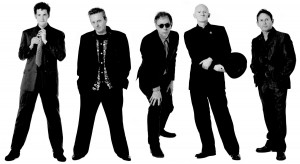
Despite the significant difference between the content and style in both writers’ songs, the fact is that they marry together beautifully—was that hard to achieve in the studio, was that part of Steve’s input to the process?
Phil: We already knew—from Ghostown mainly—that the diversity of our styles was always more likely to be complimentary rather than conflicting, so we don’t worry about that aspect too much. But if we do a fifth studio album, which I think we all hope we will, I think me and Pete would like to try a bit more Macca and John, you know, a bit more stepping on each other’s toes. Just to shake it up a bit, see what happens.
Pete: Our musical contributions to each others songs tend to pull them closer together in the scheme of things.
In the cover art, why the photo of Joe Meek against a period domestic radiator? Homosexual context? Pop context?
Phil: Pete would occasionally pause the sessions just to play a bit of Joe Meek and some of that stuff is extraordinary. The level of eroticism—there are moments when Heinz is singing a ballad and the entire sonic picture is Heinz’s mouth, his lips, the sound it makes, the shapes it makes. Pure infatuation. It’s like Hitchcock and his blondes.
Steve: That photograph was taken by me. It was meant to be a visual pun of the influence, in terms of attitude, that Joe Meek had on Pete not so much in terms of his sound but rather in getting down the sounds you hear in your head. A certain punk DIY attitude.
Pete: I brought that photo into the studio as a sort of comfort blanket once I had been appointed producer.
Trouble Pilgrim stands proudly alongside TV Tube Heart and Ghostown. Three studio albums, each are uniquely different in sound and texture. I believe Trouble Pilgrim may well prove with time to be the jewel in the crown although it may also be the most difficult to mine. Sounding, well, ordinary on the first couple of plays, it was that typical Radiators facet whereby they are not even remotely trying to create their own sound that left me initially unconvinced—the ‘magpie tendencies’ that Phil referred to in Part 2. If anything, it has a slightly corrupted Americana feel to some of the Phil Chevron written tracks. Other reference points on Holidai’s pop songs include the likes of the Records and Pilot. Of course when I least expected it, the melodies hooked me and the lyrics drew me closer. Then Holidai’s great production became another glint in the sun—warm but dynamic and I knew I had unearthed a very rare gemstone of the last decade. Holidai’s songs are amongst the best melodies in the bands career with the unassuming vocal harmonies from Chevron an essential addition. The use of Anita Bonnie for backing or second vocals adds new texture–on one occasion Cait O Riordan provides backing vocals. Likewise Steve Rapid is effective throughhout with keyboard sounds gently creating a paint wash background. When Rapid is deployed especially for the sour/sweet vocal contrasts heard previously on TV Tube Heart he adds an extra vocal dimension, for example, on the brilliant pop tune “She Says I’m a Loser.” Otherwise a couple of numbers are written to suit his gritty solo vocals. Holidai’s fluency on a number of lead guitar styles is very impressive also, ranging for example from surf style tremolo to biting lead riffs to a perfect slow rising solo on Chevron’ s “Huguenot.”
Phil Chevron had challenged the perception of Irishness as a central theme in Ghostown. His revelation now that his mothers lineage had been French Huguenot added a great poignancy as he reminds us all of the contribution immigrants can and do make to their adopted land. Chevron had addressed (his) homosexuality sensitively on the late ‘80s single “Under Clery’s Clock” and Trouble Pilgrim provided him the opportunity to comment further. The role of the Catholic Church and the aggressive foreign policy of the USA and the UK were also targets for his sharp pen.
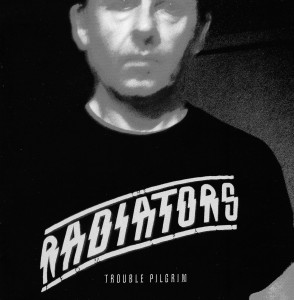
I think the guitar sounds on Trouble Pilgrim are a joy in itself. Did you use a range of vintage models? What makes in particular?
Phil: Both Pete and I used a wide variety of vintage guitars and in some cases piled them on. I used a couple of Gretch’s including a Chet Atkins Country Gent, a Rickenbacker 12-string electric, Gibson and Martin acoustics, a Les Paul and a Gibson Country Gent. Pete will tell you what he used. Basically though, we both made a conscious decision to build the sound from a pair of old Telecasters when we discovered, in rehearsals, that it was a sound we liked. I’m delighted you noticed the pains we went to, it’s been an under-appreciated aspect of that album. However, in the grand scheme, I’m not sure it added a great deal and we made an equally conscious decision with Sound City Beat (2012) to drop back to minimalism which also works well! Still, Visconti taught us how to layer guitars and I suppose we wanted to see if we had learned how to do it. He still does it; he does it on that new Bowie album. I’ve decided I don’t like it much.
Pete: My guitar selection was based around a ’76 strat, Burns Hank Marvin, Watkins Rapier 3 and a customised Telecaster. The amps used were an AC30 for Philip and a Fender Blues Junior for myself both miked up with Shure SM57’s and a vintage British ribbon called Reslo which I have in my own collection. The treble edge on the majority of tracks come from the Telecaster than were performed live with the rhythm section on the basic tracks.
I believe that one of your most important lyrics is “Huguenot.” Given the often bitter debate on immigration in Ireland during the economic boom and the reversal back now to Irish people being immigrants elsewhere your personal story is the embodiment of an immigrant family who become so embedded in their new society that generations later they have not only fully integrated, but become a cultural ambassador—indeed in your case as a writer, a cultural beacon.
What was the background to this song?
Phil: As immigration to Ireland spiked during the Celtic Tiger years, most people saw this as a good thing—shake up the gene pool, aid diversity, widen the cultural terms of reference, all those good things. All the same, there was (and is) a sizeable minority of nativist and racist Irish and I just can’t bear it. I saw all that shit in the UK in the ‘70s; I resented being expected to put up with it all over again, so I thought it might be amusing for the guy who wrote a celebrated migration hit song [“Thousands Are Sailing” for the Pogues] to write one for the incoming.
I was always quite proud of my Huguenot roots, something instilled by my mother and yet, weirdly, it never really occurred to me that I was an “immigrant” to Ireland, a hyphenated Irishman, until I began to think of it in these terms. “Huguenot” gave me great joy to write.
Although you were born with Ryan as surname, is Is La Grue your mothers original Huguenot family name? Do you wish to explain why you chose Chevron as your stage name?
Phil: La Grue is my mother’s family name, but it’s a bit uncommon even among Huguenots. Chevron sounded more plausible though it’s not of course. I still have to spell it out. “That’s Chevron with a CH…” There were already at least two other Phil Ryans in this game when I started, notably the one in Welsh band Man.
Philip, in your lyrics there is a very strong presence throughout of some themes, for example Sex, mostly homosexual in “Trouble Pilgrim,” “The Concierge,” “Hinterland,” even possibly paedophilia in “The Dark at the Top of the Stairs”?
Phil: Hmmmm. Ok, this might be a good place to clarify that “The Dark…” is not about paedophilia, nor is it about the death of a dictator, though it must be said Charlie Haughey’s funeral [former Irish prime minister or Taoiseach, subsequently discredited] was on mute on my room TV when I was writing the lyrics. No, it’s about the Twin Towers, the choice people made between being consumed by flames or jumping 80 floors to certain death. That was the one thing I obsessed over—what would you do? How do you rationalize your choices in so irrational a predicament? “The Dark at the Top of the Stairs” is the childhood fear of the unknown but here transformed to adulthood.
“Hinterland” is clearly a response to the Matthew Shepard murder but also its exploitation by the Westboro Baptist Church and also how that Fred Phelps orthodoxy plays into this crazy End Times vision that’s constantly rumbling underneath red state America.
“The Concierge” came about because unlike Vietnam, there was no narrative about sexual relief for troops in the Iraq war, so I had to invent it. It’s this album’s “Kitty Ricketts.” Sex as hypocrisy. The song hints at rape as a weapon of war too.
In “Trouble Pilgrim” the narrator finds himself in San Antonio, Texas and horny as hell. It’s a place that, for all its many charms does not present itself as an obvious center of bacchanalia and orgy but, you know, it’s where he happens to be, he improvises.
I also think that there is a strong Baconesque effect in “The Concierge.” It is an extremely unsettling, disturbing almost knowing lyric. The sexual violence is not a topic you have written about before or is it?
Phil: Nice noticing the hellish Bacon element although in fact the primary visuals to me would be Otto Dix and George Grosz at their most red. The secondary narrative about the Iraq War—the one in which soldiers went nuts and the ones in which an entire family were committed to a funeral pyre to erase both witnesses and DNA after a rape of the 15-year old daughter by a soldier—disgusted me. It was so clear that there would be no accountability, but also just a smidgen of reproval; I hated it
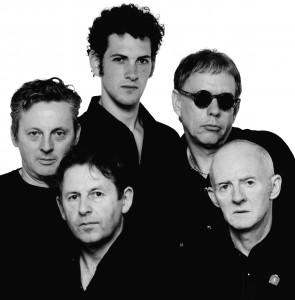
Even though you have fully explained the “Dark at the Top of The Stairs,” that fear in the child also frightens, it resonates more loudly than Jimmy’s lyrics in “Dead the Beast, Dead the Poison” from Ghostown . Again as you are aware, child sex abuse revelations and some latter day parent incest cases has ripped the skin off ‘holy’ Ireland. It may have been bruised and occasionally cut as you relate in Ghostown but the last 2 decades has left the exterior raw and bloodied.
Phil: Yes, that stuff finds its way into your work whether or not you want it to. When I discovered that for years, when I played hooky from school I literally walked past the prime Magdalene Laundry in Dublin, I was sick to my guts—so concerned with my own hatred of the Irish school system that I did not immediately see the wider malaise. Holy Catholic Ireland, one way or the other, is dead now. Few will be sad to see the back of it.
Another strong presence if that of God/Heaven/Hell/Religion in “Trouble Pilgrim,” “The Concierge,” “Hinterland,” “A Package from Home,” “Huguenot” and “The Dark at the Top of the Stairs.”
Phil: No God. God’s absence, if anything. The mother in “A Package from Home” is an atheist puzzling over her son, a soldier guarded and guided by Jesus in Iraq or Afghanistan and, you know, what are the chances God could please stop “talking” to President Bush and apparently offering him this really dodgy and harmful advice.
And of course a strong political commentary
Phil: When we were recording Trouble Pilgrim, the Iraq War was already determined as a cock up of generational singularity. It was, by 2005, so grotesque that a sort of burlesque of it was the only response left, other than pure, unmediated grief. It will haunt us for decades. This Blairite crap that somehow the jury is still out on Iraq is so damaging and myopic but will not go away as long as he’s around, with his orange grin, bullshitting people and making millions from the connections he made whilst he was in power.
The telephone number announced in “The Concierge” has 7/7 followed by 9/11 followed by 666…
Phil: The London homegrown terror atrocities, that Tony Blair denied had anything to do with Britain’s complicity in the slaughter of Iraqis, was 7/7 as in July 7th. We like shorthand dates—the logical conclusion was to utilize them as handy Freephone numbers.
Pete, do you ever tailor your songs lyrically or musically to fit with Philip’s songs/themes?
Pete: Not consciously, but “Who Are The Strangers” on Ghostown developed lyrically to examine my feelings toward being almost an Anglo–Irishman returning to the ghostown and the Church’s influence and control over everyday life.
Are there particular musical influences you relate to in writing your songs?
Pete: For the Radiators From Space early on I would have been influenced by T. Rex, Bowie and Roxy Music along with American bands like the Flamin’ Groovies, New York Dolls, MC5 who had a real R’n’R attitude. Later on and for my solo album the influences became much broader. I was always a fan of some Easy Listening artists like Matt Munro and Dickie Valentine who might have been considered cheesy, but I liked them very much, I’m a sucker for strings! I also have got to like some exotic/lounge acts from the late 50’s like Les Baxter, Esquivel and Martin Denny to name a few.
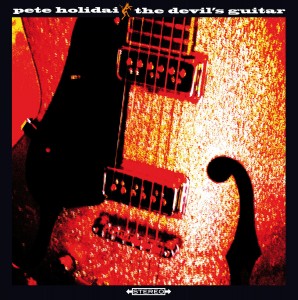
At this stage I want to recommend your 2011 solo album The Devil’s Guitar. It has become my guilty pleasure, totally and beautifully decadent. It defies description, a sort of romantic exotic lounge music wrapped in a sonic transparency of wavy guitar twang. That whammy bar is so addictive. Any major guitar influences on this one?
The main guitar influence was British twang of the sixties led by Hank Marvin. The Devil’s Guitar was a limited edition of 100 CDs and a Bandcamp.com download. Lots more at peteholidai.com
Is there a distinctive Pete Holidai songwriting style?
Pete: I tend to focus on a certain formula for certain songs. For example “Million Dollar Hero” from Ghostown and “Heaven” from Trouble Pilgrim use more or less the same formula with an emphasis on a strong hook in the chorus. “Heaven” uses the chorus chords on the instrumental intro, on into the verse, a melodic bridge into the chorus (which now sounds familiar) and a middle eight bars, chorus outro.
Who took the lead guitar parts on Trouble Pilgrim?
Pete: Philip did the lead parts on Ghostown while I did the lead parts on Trouble Pilgrim (after I was promoted!).
Phil: Given that I was a reluctant lead guitarist in the first place, the almost organic, imperceptible switch from me to Pete was very pleasing!
Given your fondness for the classic boy/girl relationships as a lyrical source, I am very taken at the different and insightful angles in your Trouble Pilgrim lyrics. First, “She Says I’m a Loser.” This song is pop gold dust. Steve’s vocal presence works brilliantly to harden the edges.
Pete . Lyrically it’s the first of the sequence where the relationship has completely broken down. The couplets give both standpoints: “She says you never understand, I say tell it to the hand.” Steve delivers the snap point with venom.
“Don’t Walk Away” again an interesting slant.
Pete: It’s the actual confrontation second in sequence
And what about ‘Words’… I’ve been there too !
Pete: I was an emotional wreck, wondering if I could ever want or find love again. The pain of a break-up is not the sole ownership of the female. I was lucky enough to find someone who helped repair the damage that losing trust in someone brings.
The great “Tell Me Why” lyrics—long term relationship?
Pete: Lyrically it follows on from “Words” where the healing girl is baring her soul, but I’m resisting getting involved by forcing a distraction, I want to engage but I don’t want to engage in case—I want to bear my soul… eventually! Musically I wanted it to be a Showband tribute! [Laughs]
The wonderful “Heaven”—was it a real experience?
Pete: The feelings expressed were real the actions remained a fantasy.
Who is Marty in “Second Avenue”?
Pete: Martin Scorsese. I was in Bearsville Studios in Woodstock producing a band called Junkster for RCA records, USA. We took a few days off and went down to Manhattan and we ended up at a loft party, I always wished ‘Marty’ had been there. Also while in NYC I recorded the sound of NYC traffic on a Walkman cassette recorder just as the traffic lights changed with the beep beeps etc. I sampled from that cassette and put it on the recording just as the chorus is kicking in.
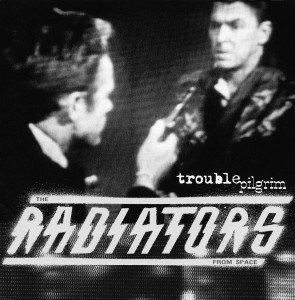
Steve, in your capacity as graphic designer, Steve Averill, why did you design different covers for Trouble Pilgrim?
Steve: The idea for the title came from a novel I was reading at the time in which there was a reference to a quote from John Wayne who talking to stranger he found at the side of a trail asked “Trouble, Pilgrim?” It seemed appropriate to what we were doing and Philip Chevron took up the idea for the song of that name that was included on the album.
The first cover was taken at a rehearsal. Our drummer Johnny Bonnie was due to go in for an operation the next day and as there had been a suggestion that we revert to our original hand-drawn logo from “Television Screen.” I took a number of pictures of band members wearing a logo based T-shirt and Johnny seemed the most “troubled” in the pictures. He may be one of a small number of drummers who featured on an album cover.
It was not, however, the original idea for the cover. Philip Chevron had a DVD of a US TV show Dark, Dark Hours from 1954 and wanted to use a still from that. We were unable to secure that in time for the initial release and so went ahead with the cover as it appears.
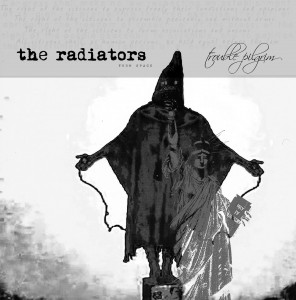
Ace Records’ Ted Carroll and Roger Armstrong agreed to release the album on the Chiswick label in the UK and Europe so we decided to mark that with a new cover. The image from the cover is a comment on liberty and the perceptions of such that uses a combination of graphics referencing a notorious internet image of the abuse and torture of prisoners in Abu Ghraib and contrasting it with that of the Statue Of Liberty and what it was supposed to stand for. It was pop-punk art.
For the Shite and Onions US release we decided to try and revert to the original idea but this time by using an image photographed from a TV screen showing a distorted image of two of the actors featured in a particular episode of Dark, Dark Hours that featured Ronald Reagan as a doctor and James Dean as a criminal bringing a wounded companion to be treated for a gunshot wound. Reagan’s character does this under duress at gunpoint. Again it seemed to underline the troubled nature of life and authority verses anarchy.
When an offer came in to release of the album in Japan it was strongly requested that it feature the ‘zigzag’ logo. A slight color variation of the image was used in this version. As a graphic designer I enjoyed the opportunity of creating a specific and distinctive cover for the album in each territory. I wonder if anyone bought all four—somehow I suspect not.
Trouble Pilgrim was released in Ireland initially in October 2006. Phil Chevron’s throat problem noticed during recording was later diagnosed as throat cancer requiring lengthy treatment. The band were obviously unable to promote the album but Phil’s apparent full recovery led to the studio sessions for Sound City Beat (introduced in the Blue Aces story and reviewed in UT #34) . For this album, released in April 2012 the band chose to reflect on Dublin’s rock scene of the 1960s and ‘70s and do cover versions of songs associated with the likes of Thin Lizzy, Skid Row, the Movement, Them, Eire Apparent, Horslips and many more. Plans to support with some major gigs were initially delayed and then abandoned as Phil’s health deteriorated unexpectedly leading to the heartbreaking diagnosis that the cancer had returned and was terminal. Recognising the extent of Phil’s illness the Radiators from Space temporarily adopted the name Trouble Pilgrims to perform some gigs.
Sadly, Philip Chevron passed away on October 8, 2013.
The Trouble Pilgrims have decided to continue as a band and have immediate plans..
Steve We are going into the studio later this month (March 2014) to record a single. We hope to build on a particular direction that was a vital part of the Radiators sound and create something that develop into something specific without ignoring what we did in the Radiators. We also want to keep Philip’s legacy and songs alive.
Pete We had a positive meeting recently where we mapped out a critical pathway that includes recording a double a side single “Animal Gang Blues”, which is an original that will be c/w “Who Do You Love” and set for release/live gig launch in early May in Ireland. The Trouble Pilgrims will target 80% new originals and 20% selected from the Radiators recorded repertoire by 2015
Can you see alternative influences emerging in the Trouble Pilgrims?
Pete I imagine that all of our external influences will have a say in the development of the Pilgrims. Because we have retired the Radiators from Space as a live and recording band we have to strive to get a balance between the old and the new. We must at all costs avoid becoming a tribute to ourselves
POSTSCRIPT: I attended that same Trouble Pilgrims gig referred to in the interview on May 3, 2014, where the band played a great set of songs spread over their entire Radiators (from Space) career and including a couple of numbers from Pete’s solo album. Most unexpected was a wonderful new arrangement of Phil Chevron’s “Under the Clock at Clery’s.” The band closed the set with both sides of the new single. “Animal Gang Blues” is utterly different from anything previously attempted by the Rads. Commenting on Dublin street gangs in the ‘50s/’60s it sets a bass groove similar in feel to “Rocky Mountain Way” allowing great vocal and guitar tension to be injected into the verses. The chorus drags you into a slowed “Riot in Cell Block No 9” vocal; I swear I can hear Lee Brilleaux. Detonate a “Shakin All Over” guitar riff to splay across the breaks with compelling dynamics and the audience were stunned. Its rapturous reception was repeated for their take on Bo Diddley’s “Who Do You Love.” The finish of this version was visually imprinted with Steve Rapid commanding his Theremin with wild gestures into sonic swoops dissecting the slide and tremolo guitar assaults over the timeless rhythm. •
Order Issue #35 with Part One of the Radiators story here.
Order Issue #36 with Part Two of the Radiators story here.
Order Issue #37 with Part Three of the Radiators story here.
ACKNOWLEDGEMENTS:
I wish to record my appreciation to Pete Holidai, Steve Rapid and late Philip Chevron.

The Radiators at Whelan’s in Dublin, 2005.